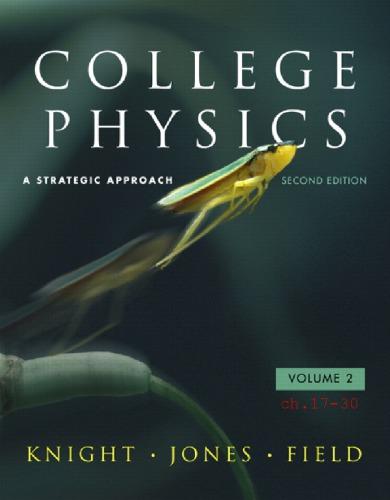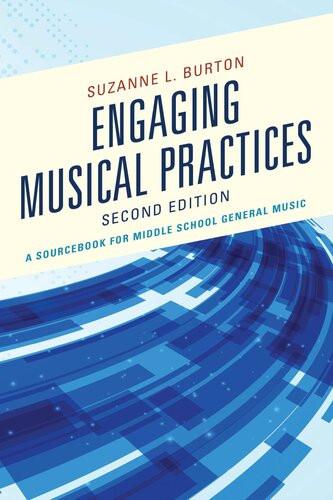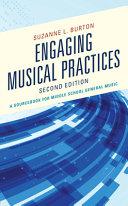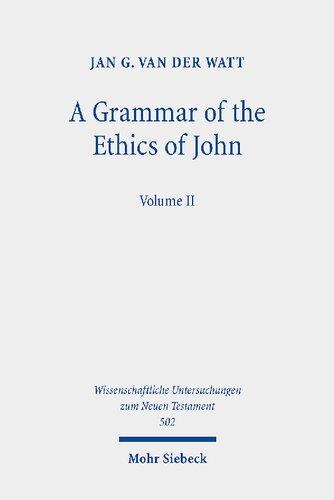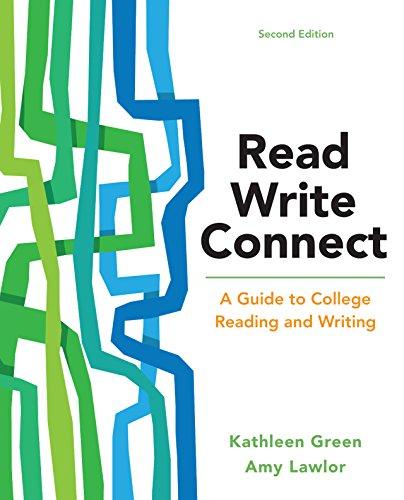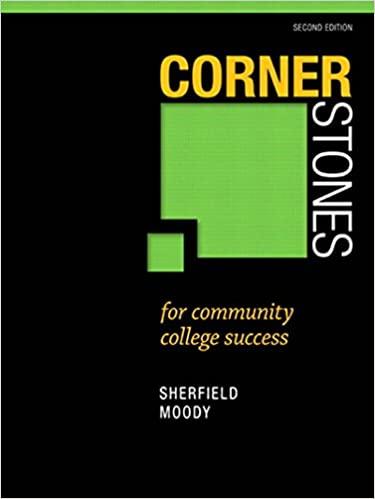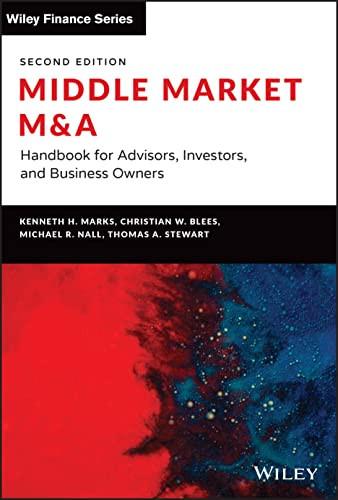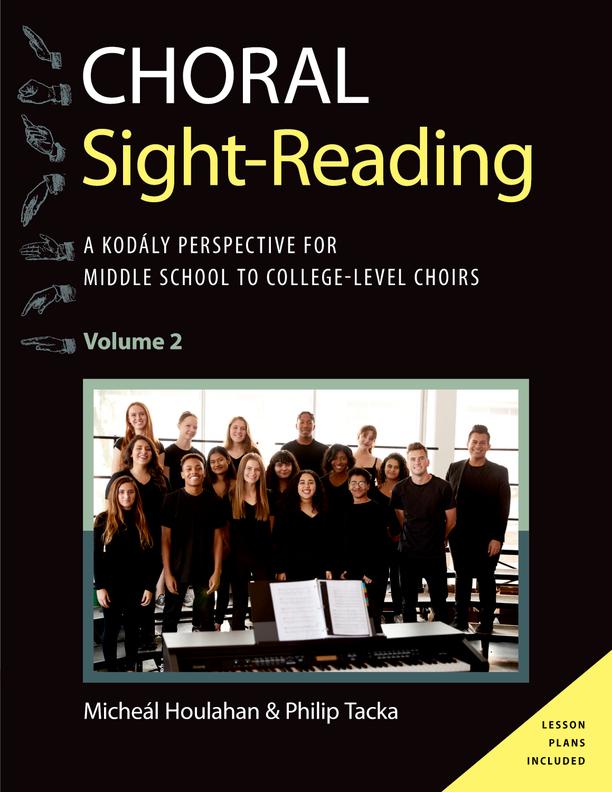Choral Sight-Reading
A Kodály Perspective for Middle School to College-Level Choirs
Volume 2
Micheál Houlahan & Philip Tacka
Oxford University Press is a department of the University of Oxford. It furthers the University’s objective of excellence in research, scholarship, and education by publishing worldwide. Oxford is a registered trade mark of Oxford University Press in the UK and certain other countries.
Published in the United States of America by Oxford University Press 198 Madison Avenue, New York, NY 10016, United States of America.
© Oxford University Press 2023
All rights reserved. No part of this publication may be reproduced, stored in a retrieval system, or transmitted, in any form or by any means, without the prior permission in writing of Oxford University Press, or as expressly permitted by law, by license, or under terms agreed with the appropriate reproduction rights organization. Inquiries concerning reproduction outside the scope of the above should be sent to the Rights Department, Oxford University Press, at the address above.
You must not circulate this work in any other form and you must impose this same condition on any acquirer.
Library of Congress Cataloging-in-Publication Data
Names: Houlahan, Micheál, author. | Tacka, Philip, author. Title: Choral artistry : a Kodály perspective for middle school to college-level choirs / Micheál Houlahan & Philip Tacka.
Description: New York: Oxford University Press, 2023. | Series: Kodaly today handbook series | Includes index. | Contents: Volume 1. Framing a Choral Curriculum Based on the Kodály Approach—Getting Started: What to Teach During the First Few Weeks of a Choral—Laying the Foundations of Choral Singing Using Folk songs and Folk Song Arrangements—Developing Part-work Skills in the Choral Rehearsal for Beginner—Sound Ways to Develop Audiation, Reading, and Music Theory Skills in the Choral Rehearsal—Music Theory and Sight Reading Sequence for Level 1 Choirs—Music Theory and Sight Reading Sequence for Level 2 Choirs—Music Theory and Sight Reading Sequence for Level 3 Choirs—An Organic Approach to Teaching Sight-reading in the Choral Rehearsal—How We Learn Impacts How We Teach: Creating an Effective Teaching—Putting It All Together: Choral Strategies and Rehearsal Plans—Evaluation and Assessment in the Choral Rehearsal. Identifiers: LCCN 2021034537 (print) | LCCN 2021034538 (ebook) | ISBN 9780197550496 (v. 1; paperback) | ISBN 9780197550489 (v. 1; hardback) | ISBN 9780197550540 (v. 2; paperback) | ISBN 9780197550533 (v. 2; hardback) | ISBN 9780197550519 (v. 1; epub) | ISBN 9780197550526 | ISBN 9780197550564 (v. 2 ; epub) | ISBN 9780197550571
Subjects: LCSH: Choral singing—Instruction and study. | Kodály, Zoltán, 1882–1967.
DOI: 10.1093/oso/9780197550533.001.0001
9 8 7 6 5 4 3 2 1
Paperback printed by Sheridan Books, Inc., United States of America
Hardback printed by Bridgeport National Bindery, Inc., United States of America
Permission to use works presented in this book has been obtained from the following.
Zoltán Kodály, “Ave Maria”: Permission granted by Editio Musica Budapest Zeneműkiadó Ltd., Universal Music Publishing, Editio Musica Budapest, 2020.
Belá Bartók, “Kanón”: Permission granted by Editio Musica Budapest Zeneműkiadó Ltd., Universal Music Publishing, Editio Musica Budapest Ltd., 2020.
John Tavener, “The Lamb”: Permission granted by Hal Leonard LLC, 2020.
Acknowledgments • vii
Introduction • ix
Unit 1. Phrase and Form • 1
Unit 2. Beat, Meter, and Rhythm • 7
Unit 3. Simple Melodic Patterns • 17
Unit 4. Simple Rhythm Patterns: First Division of the Beat • 23
Unit 5. Orientation to the Pentatonic Scale: Trichord 1 • 37
Unit 6. Orientation to the Pentatonic Scale: Trichord 2 • 48
Unit 7. Simple Meter: Second Division of the Beat and Basic Patterns • 57
Unit 8. Major Pentatonic Melodies • 65
Unit 9. Simple Meter: Second Division of the Beat and More Complicated Patterns • 77
Unit 10. The Extended Pentatonic Scale • 84
Unit 11. Upbeats • 93
Unit 12. Syncopation • 103
Unit 13. Minor Pentatonic Melodies • 111
Unit 14. Dotted Notes • 121
Unit 15. Orientation to the Major Scale: Pentachord and Hexachord Melodies • 128
Unit 16. Simple Meter: Second Division of the Beat and Dotted Note Combinations • 137
Unit 17. The Major Scale • 147
Unit 18. Triple Meter and Changing Meter • 166
Unit 19. Orientation to Minor Scales • 182
Unit 20. Compound Meter: Even Division of the Beat • 199
Unit 21. The Minor Scale • 212
Unit 22. Compound Meter: Second Division of the Beat • 225
Unit 23. The Harmonic Minor Scale • 235
Unit 24. Compound Meter: Second Division of the Beat and Dotted Rhythms • 248
Unit 25. The Melodic Minor Scale • 256
Unit 26. Renaissance- Style Compositions • 263
Unit 27. Baroque- Style Compositions • 280
Unit 28. Classical- Style Compositions • 297
Unit 29. Romantic Twenty-First- Century Style Compositions • 309
Appendix of Sources in Each Unit • 329 Index • 349
Acknowledgments
We thank Suzanne Ryan, past editor-in- chief for Humanities and Executive Editor of Music at Oxford University Press, for her encouragement and critical guidance during the writing of this book. We also appreciate the support and guidance of Norm Hirschy at Oxford University Press. Special thanks to our editors, Jane Zanichkowsky and Anupama Gopinath, for their impeccable scrutiny and thoughtful editorial assistance with our manuscripts.
Introduction
Choral Sight-Reading: A Kodály Perspective for Middle School to College-Level Choirs is a practical approach to teaching sight reading according to the Kodály concept. Our overarching goal is to provide choral directors with a musical way to include teaching sight-reading and music theory as part of their choral rehearsals. This book also aims to guide students in developing their capacity to think about sound and apply that aural experience to learning music notation and choral repertoire. In our text, this twofold procedure is laid out in a specific arrangement to aid in learning.
We undertook this project recognizing that both novice and more advanced students would benefit from a logical and sequential pedagogy for expanding their musicianship and sight-reading skills as part of their choral experience. The research for this publication is not presented as exhaustive nor conclusive; it is offered as a foundation. We encourage our colleagues in the field to continue this research.
This book includes twenty-nine units. Each unit guides choral students to read music notation progressively by gradually introducing rhythmic and melodic elements and concepts within songs. The first song in each unit focuses on students’ hearing, performance, and thought processes to enable them to practice and understand the musical elements and concepts covered in the unit. Each unit consists of two sections, the beginner section for novice and intermediate choral singers and the advanced section for students in a high school varsity or a college-level performing ensemble. Each part in this double structure goes through the same steps. Units 26 through 29, for advanced choirs, present selected sight-reading repertoire from the Renaissance, Baroque, Classical, and Romantic styles. The last unit includes suggestions for learning twentieth and twenty-first- century choral music.
Each unit presents material in a specific order. This structure provides a systematic approach to sight-reading that engages students in what we’ve termed the Performance Through Sound Analysis and Notation model to develop music theory and sight-reading skills.1 Units 3–25 have the same design. What follows is a typical unit structure. Steps 6–8 apply to the advanced section of the unit.
1. Unit Overview
2. Learning a Focus Melody by Sound Analysis. Students are guided to sing a short music example with text or with a neutral syllable.
3. Translating the Focus Melody into Notation. This section uses the Houlahan and Tacka Model of Learning and Instruction that forms the core of their pedagogical publications. Their model first leads students through an aural analysis of the sound. Students are then guided to sing the focus melody with rhythm and/or solfège syllables and notate the rhythm and/or the melody on the staff.
4. Music Theory. This section provides the essential music theory knowledge associated with the newly learned rhythmic and/or melodic element presented in the unit.
5. Sight-Reading. This section provides a repertoire for practicing sight-reading unison and part- work material incorporating the new music elements.
6. Advanced Music Theory. This section offers more detailed music theory knowledge about the musical element presented in the unit.
7. Advanced Sight-Reading. This section provides more advanced sight-reading practice of the musical element taught in the unit.
8. Assessment. This section provides rubrics for assessing beginning and advanced sight-reading skills.
Each unit begins with a focus song that the choral director sings for the students a number of times using the Performance Through Sound Analysis model for learning repertoire. With each repetition of the song, students are guided to listen and determine the following by ear:
• the number of phrases in the song
• the form of the song
• the meter of the song
• the tempo and appropriate dynamic marks
Once students can identify these important events, the choral director sings the song with rhythm or solfège syllables (depending on the unit), and students sing it back by ear. After students have memorized the song with rhythm and/or solfège syllables, the syllables are translated into notation. Students then practice reading the focus song from notation. This gives students an opportunity to practice reading known songs in staff notation before they begin sight-reading new or unfamiliar repertoire. Section 4 explains the music theory concepts within the unit. The explanations provide students with information that helps them read and understand a music score. Section 5 contains sight-reading examples. Before sight-reading each example, students are guided to hear or audiate it before performing it aloud and then to determine or describe the phrasing, form, meter, tempo, dynamics, and tone set if applicable.
Advanced music theory expands on the information presented in section 4. It allows students with more choral experience to apply their knowledge of rhythm and/or solfège syllables and counting with numbers to sight-reading more complicated musical examples. For example, advanced rhythmic units include musical examples written in more complicated meters such as 2/8 and 2/2; this section also includes key signatures using from one to seven sharps and flats. This activity reinforces what’s critical to understanding the takadimi rhythm syllables, namely, that rhythm syllables and counting numbers remain the same as those written in simple time signatures. The syllables designate a position on the beat; the syllables do not designate a note value. In the advanced sections, students practice sight reading in more complex keys. Using solfège syllables simplifies this process. Regarding key signatures and staff placement, the keys of F major and F- sharp major may have different key signatures, but the note placement remains the same.
The Order of Key Signatures Used in Each Unit
In the introductory section of each melodic unit, we limit sight-reading to the following major keys: do = C, F, and G. As the units progress, musical examples in the major keys of
B-flat and D are introduced. When minor tonality is introduced, we limit sight-reading to the minor keys la = A, D, and E. As the units focusing on minor tonalities progress, musical examples in the minor keys of g minor and b minor are included.
In the advanced section, we use a slightly different key sequence for reading major keys. The premise is that the keys (and notes) C and C- sharp have the same staff placement, and therefore, the only difference between sight-reading in those keys is the starting pitch; the staff placement is the same.
1. Sight-reading examples are written in do = C, C- sharp, C-flat, F, F- sharp, G, and G-flat. We introduce the key signatures for all of these keys and a way to sing with absolute letter names such as C- sharp with one syllable, ciss, and B-flat with one syllable, bess
2. The case is the same with the following keys: do = B-flat, B, D, D-flat, E, E-flat, A, and A-flat.
In each unit’s advanced section, the sequence for introducing minor keys continues with the same logic, la = D has the same staff placement as la = D sharp, and so on.
Rhythm Syllables and Counting with Numbers
Today, several systems of rhythm syllable systems are available. Educators are likely to be most familiar with using numbers or traditional Kodály rhythm syllables. A shortcoming of several rhythm syllable systems is that the syllables themselves do not enable the learner to distinguish where a sound falls on a beat. We promote using takadimi syllables, currently adopted by elementary, middle school, high school, and college programs. The takadimi rhythm syllables simply indicate where sounds fall on beats, The syllables themselves are not associated with note values. The takadimi syllables provide a reading and aural understanding system that adapts to any time signature or meter. Table I.1 compares the takadimi and the traditional Kodály rhythm syllables. Notice how the takadimi syllables correlates to counting with numbers. This table only includes the rhythmic elements for notating rhythms in duple and quadruple simple meter and compound meters.
Unit Summaries
Unit 1. Phrase and Form
This unit introduces students to the concept of a musical phrase and how to determine the form of compositions eight to sixteen measures in length.
Unit 2. Beat, Meter, and Rhythm
This unit shows students how to aurally identify aspects of music associated with rhythm.
Unit 3. Simple Melodic Patterns
This unit addresses features of pitch, or the “highness” or “lowness” of a musical sound.
Unit 4. Simple Rhythm Patterns: First Division of the Beat
This unit addresses basic elements of music related to rhythm. The objective is to address simple rhythms such as the half note, quarter note, eighth note, and quarter and eighth rests.
Table I.1 Rhythm syllables
Rhythmic element
Takadimi rhythm syllables
Kod á ly rhythm syllables
Counting with numbers Duple Meter
Unit 5. Orientation to the Pentatonic Scale: Trichord 1
In this unit and the next, students will learn about the l- s-m subset of the pentatonic scale.
Unit 6. Orientation to the Pentatonic Scale: Trichord 2
This unit introduces the m-r-d subset of the pentatonic scale. It is written to help students develop knowledge of musical notation as well as performance.
Unit 7. Simple Meter: Second Division of the Beat and Basic Patterns
This unit adds to the student’s knowledge of rhythm. Initially, in rhythmic learning, students kept the beat, and then divided the beat into two sounds on the beat. Here they divide the beat into four even sounds. This is referred to as the second subdivision of the beat.
Unit 8. Major Pentatonic Melodies
This unit presents the major pentatonic scale.
Unit 9. Simple Meter: Second Division of the Beat and More Complicated Patterns
In this unit we group the sounds on the beat into three uneven sounds: a long sound followed by two short sounds and then two short sounds followed by a long sound.
Unit 10. The Extended Pentatonic Scale
This unit presents the notes of the extended major pentatonic scale, focusing on low la (l,) and low so (s,).
Unit 11. Upbeats
This unit introduces the upper extended range of the pentatonic scale and internal and external upbeats.
Unit 12. Syncopation
This unit introduces syncopation or syncopated rhythm, continuing the practice of the extended pentatonic scale with syncopated rhythmic patterns.
Unit 13. Minor Pentatonic Melodies
This unit presents a minor pentatonic scale.
Unit 14. Dotted Notes
This unit adds to students' knowledge of rhythm patterns by addressing the dotted quarter note followed by an eighth note. It continues the extended pentatonic scale and adds both dotted note patterns and syncopated rhythmic patterns.
Unit 15. Orientation to the Major Scale: Pentachord and Hexachord Melodies
This unit addresses major tonality through five- and six-note scales.
Unit 16. Simple Meter: Second Division of the Beat and Dotted Note Combinations
In this unit we group the sounds on the beat into two uneven sounds: a long sound followed by a short sound and a short sound followed by a long sound.
Unit 17. The Major Scale
In previous units, students learned about pentatonic, pentachord, and hexachord scales. This unit builds on that information and enlarges the number of notes in the scale to eight.
Unit 18. Triple Meter and Changing Meter
This unit presents triple meter as well as a changing meter.
Unit 19. Orientation to Minor Scales
Just as we began the study of major scales with small five- and six-note scale structures, this unit introduces minor tonality in the same way.
Unit 20. Compound Meter: Even Division of the Beat
This unit introduces division of the pulse or beat into three subdivisions of equal length.
Unit 21. The Minor Scale
This unit addresses the natural minor scale.
Unit 22. Compound Meter: Second Division of the Beat
This unit teaches students about the second subdivision of the beat in compound meter.
Unit 23. The Harmonic Minor Scale
This unit presents the harmonic form of the minor scale.
Unit 24. Compound Meter: Second Division of the Beat and Dotted Rhythms
This unit introduces more complex subdivisions of the beat in compound meter that are found in tonal music.
Unit 25. The Melodic Minor Scale
This unit presents the melodic minor scale, the third type of minor scale structure.
Unit 26. Renaissance- Style Compositions
This unit presents Renaissance literature for sight-reading.
Unit 27. Baroque- Style Compositions
This unit presents Baroque literature for sight-reading.
Unit 28. Classical- Style Compositions
This unit presents Classical literature for sight-reading.
Unit 29. Romantic and Twenty-First- Century– Style Compositions.
This unit presents information on sight-reading both Romantic and twentiethcentury literature for sight-reading.
Outstanding Features
Research-based and field- tested. We are fortunate to work with choral directors who have field- tested the materials and teaching sequences in this book. The repertoire is presented with a teaching sequence informed by current research findings in music perception and cognition. This enables us to present a model of music instruction and learning that shapes students’ musical understandings and increases their metacognitive skills. By doing so, we present a clear picture of how one develops sight-reading skills based on the Kodály perspective. Presents sequential development of sight- reading. This volume provides a systematic approach to the development of sight-reading unison and part music. The preliminary units also include part- work activities by adding simple rhythmic and melodic ostinatos to songs and providing canons for singing in two to four parts. Subsequent units include complete music examples written in several parts.
Teaches the skill of audiation. Audiation, or inner hearing (the ability to hear in one’s head), is a skill that is sometimes overlooked in the context of a choral rehearsal. Here,
along with a roadmap for teaching basic and advanced music sight- reading skills, we use a teaching procedure that also develops students’ audiation skills. Audiation and listening skills are essential to the development of part- work skills. Our specific teaching procedures offer a sophisticated methodology that reverses the traditional approach to teaching sight-reading, which begins with notation.
Provides assessment tools. Every unit concludes with an assessment activity and rubric for the basic and advanced levels. The assessment is includes (1) an evaluation of a focus melody sung with rhythm syllables and numbers or solfège syllables, depending on the unit, and (2) a new sight- reading example that uses the newly learned rhythm or solfège syllables and numbers. The advanced assessment is also twofold but uses more challenging musical examples. An example of an assessment protocol follows.
Singing Assessment
Sing Choral Etude 14.X. with solfège syllables and hand signs.
1. In- tune singing: The student sings with the correct intonation. When errors are made, the student can self- correct with little or no prompting from the teacher.
2. Fluidity: The student keeps a steady and consistent beat while performing with little or no hesitation.
3. Rhythm: The student performs accurate rhythms while singing with solfège syllables.
4. Solfège syllables: The student sings with accurate solfège syllables and accurate hand signs.
TOTAL / 50 points Comments:
Sight-Reading Assessment Unit 15
Sight-read the following musical example with solfège syllables and hand signs.
1. In- tune singing: The student sings with correct intonation.
2. Fluidity: The student keeps a steady and consistent beat while performing with little or no hesitation.
3. Rhythm: The student performs accurate rhythms while singing with solfège syllables.
4. Solfège syllables: The student sings with accurate solfège syllables and accurate hand signs.
TOTAL / 50 points
Comments:
Who Should Read This book?
Choral Sight-Reading is designed primarily for middle school, high school, and college choral directors, as well as undergraduate and graduate music education and conducting students. This book should also be of interest to college professors who conduct choirs and teach undergraduate or graduate choral pedagogy courses. Additional readership groups could include elementary music choral directors who teach choir or choral directors who teach honors choirs.
How to Use This Book
For Level 1 choirs, this book offers an approach for teaching a music theory and sightreading sequence in the choral rehearsal. We present a detailed music theory curriculum for teaching Level 1 as well as detailed strategies for teaching the following concepts:
• The first division of the beat: quarter and eighth notes
• Subsets of the pentatonic scale: l-s-m and m-r-d
• The second division of the beat: sixteenth notes
• The pentatonic scale
• Syncopation
• Dotted quarter note and eighth note
• Major pentachord and hexachord scales
• Major diatonic scale
• Compound meter: even division of the beat
This book also offers an approach for teaching high school and college music theory and sight-reading in the choral rehearsal. We present a detailed music theory curriculum for Level 2 and Level 3 choirs and detailed teaching strategies for the following concepts.
• Advanced meters: and
• Syncopation: variations over two beats
• Syncopation occurring on the beat
• Hemiola
• Dotted quarter and two sixteenth notes
• Altered tones
• Chromatic notes
• Intervals
• Harmonic functions in major and minor keys
• Triads in root position and inversions
• Chord progressions using primary and secondary triads in major and minor keys
• Roman numerals and figured bass
• Cadences
• Modes
We provide repertoire for teaching each music theory concept in the Level 2 music theory and sight-reading sequence, including unison and part- singing examples incorporating these elements. Assessment rubrics for sight-reading are included.
Note
1 Micheal Houlahan and Philip Tacka (2015) Kodály Today: A Cognitive Approach to Music Education 2nd ed. (New York: Oxford University Press) Chapter 6 “From Sound to Symbol: A New Learning Theory Model.”
Choral Sight-Reading
Phrase and Form
1. Unit Overview: Phrase
In this unit we begin to explore through listening and singing the way musical phrases define the structure of a composition. By singing, we will determine whether phrases are the same, similar, or different. Understanding these structures will help you perform more musically and will also help you memorize music. Label the phrases with letters: A, B, C, and so on. Label similar phrases as variants (for example, A variant), or simply call them A prime or A1. The phrase structure of a piece of music is called the form.
2. Learning a Focus Melody by Sound Analysis
As your director sings Choral Etude 1.1 with a neutral syllable, or text, determine the following:
• the number of phrases
• the form
• the tempo and dynamic markings
3. Translating the Focus Melody into Notation
From sound to symbol
Listen as your director performs Choral etude 1.1. Then sing it while drawing each phrase in the air.
4. Music Theory
A phrase is a musical unit defined by the interconnection of melody, rhythm, and harmony and ends with a cadence (a point of rest) of some kind. The length of a phrase varies and is usually followed by an answering phrase of the same length. A phrase mark (the
Choral Etude 1.1. Focus Melody
Choral Etude 1.2.
arched line above each line of music) suggests a musical idea. Phrases indicate a breathing point in the music. A musical phrase will typically be four measures in length. A music phrase can sound open or closed.
A motif is a small rhythmic or melodic idea within the phrase. For example, “rocky Mountain” is made up of several rhythmic motives.
Period structure is a question-and-answer form. When there are two phrases, the end of the first phrase is open or weak; the subsequent phrase sounds like more of an ending. The open phrase is sometimes referred to as an antecedent; the second phrase is known as the consequent phrase and ends with a “closed” feeling. There are several different period structures. “Wall Flowers” is an example of a parallel period.
Strophic form uses the same melody for successive stanzas. “o, Belinda” (Choral etude 1.4) is an example of a song in strophic form. Subsequent verses include “right hand ’round,” “Left hand ’round,” and so on.
Some songs with additional verses can also include a refrain. refer to this type of form as verse-refrain.
“do Let Me out” (Choral etude 1.5) is an example of verse- chorus form. This type of form is built in two sections. The chorus contains melodic motifs from the verse section.
Choral Etude 1.3.
Choral Etude 1.4.
try the following activities in your rehearsal.
1. Identify a musical phrase and a period structure in the repertoire you are singing.
2. Look at the ending of each phrase and identify whether it is open or closed. An open phrase sounds as though more music is expected to follow. A “closed” phrase sounds finished.
5. Sight-Reading
Sight-reading unison melodies
1. As your director sings the songs, draw the phrases in the air.
2. Look at your choral repertoire and identify the phrases in the score. Are the phrases the same, similar, or different? describe the phrases as “open” or “closed” and determine the form.
Choral Etude 1.5.
Choral Etude 1.6.
Choral Etude 1.7.
1. Unit Overview: Form
In this segment of the unit we guide you to aurally analyze the structure of several pieces and then determine their form. In order to do this, listen, determine the number of phrases, and then determine whether they are the same, similar, or different. Label the phrases with the letters A, B, C, and so on, as appropriate. describe similar phrases as variants (for example, A variant), or simply call them A prime or A1. The phrase structure of a piece of music is called the form.
2. Learning a Focus Melody by Sound Analysis
As your director sings Choral Etude 1.8 with a neutral syllable or with text, determine the following:
• the number of phrases
• the form
• the meter
• the tempo and dynamic markings
3. Translating the Focus Melody into Notation
From sound to symbol
Listen as your director performs Choral etude 1.9. Then sing it while drawing each phrase in the air.
4. Music Theory
Form describes the structure, architecture, or organization of a piece of music. The relationship between the phrases of a piece determines itsform. Label each phrase of music with a letter. The first phrase is always labeled A. If the second phrase is the same as the first, we repeat the letter A; if it is different, we use a different letter. If the phrase is similar, we can use Av, meaning “A with variation” (A prime or A′). “Are You Sleeping?” has four phrases. Because each phrase is different, we label them ABCd. These letters indicate the form of the composition.
Choral Etude 1.8. Focus Melody
5. Sight-Reading
Sight-reading unison melodies
1. Audiate Choral etude 1.9 before singing it.
2. Sing Choral etude 1.9 and draw the phrases in the air, then label the form.
Phrase structure of Choral Etude 1.9.


